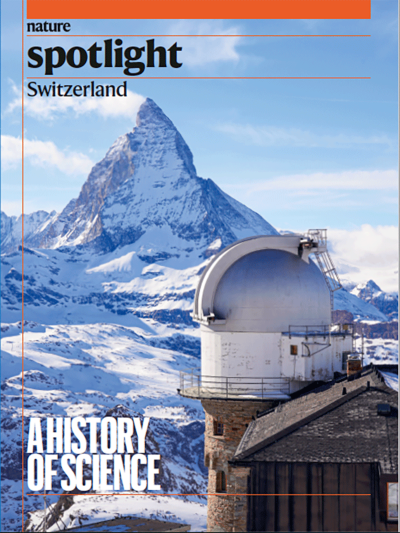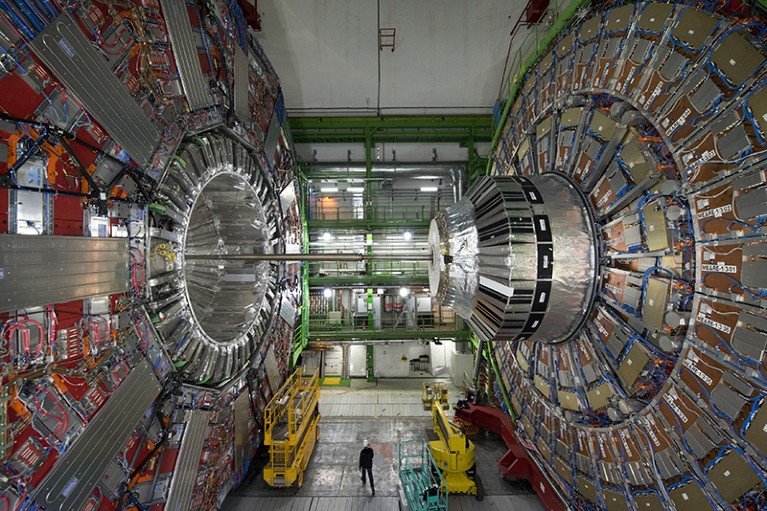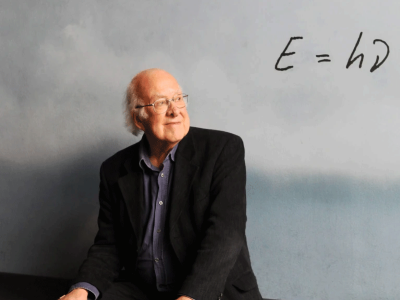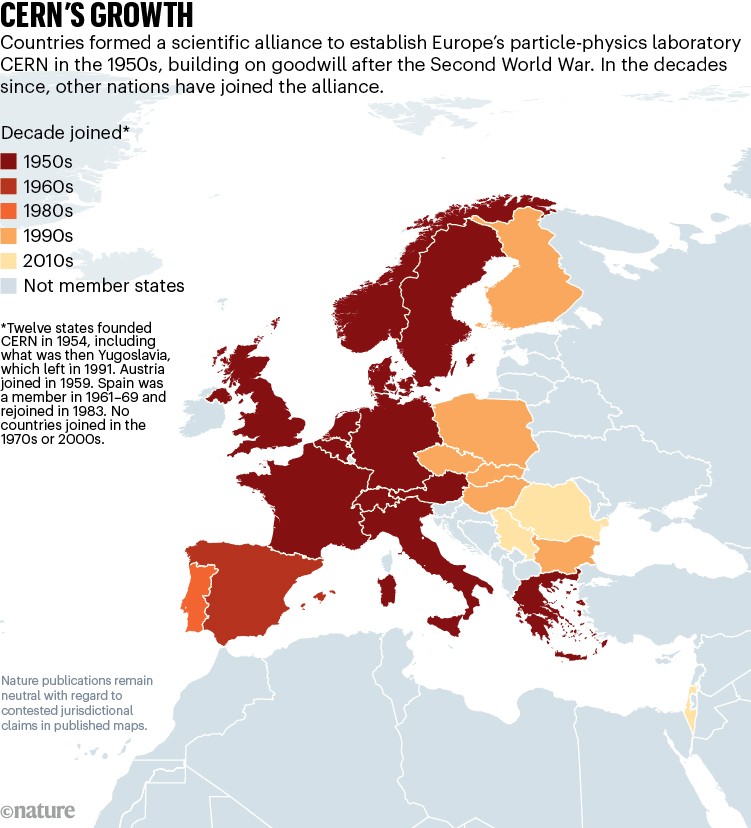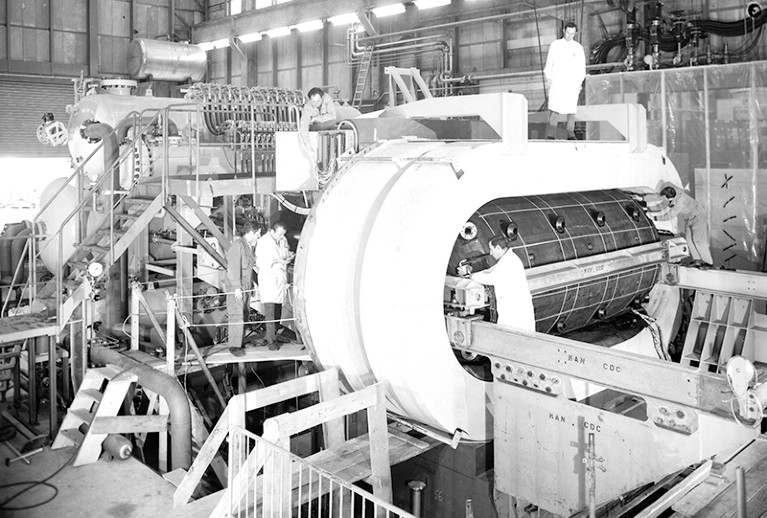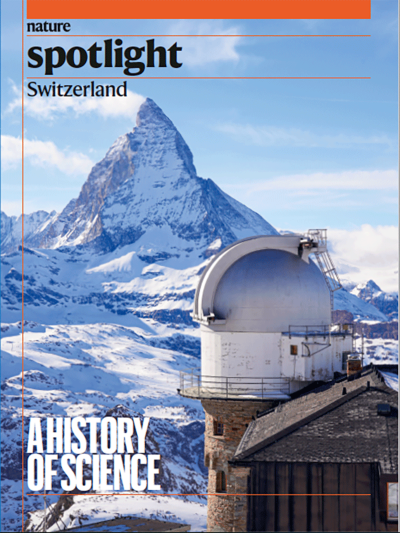[ad_1]
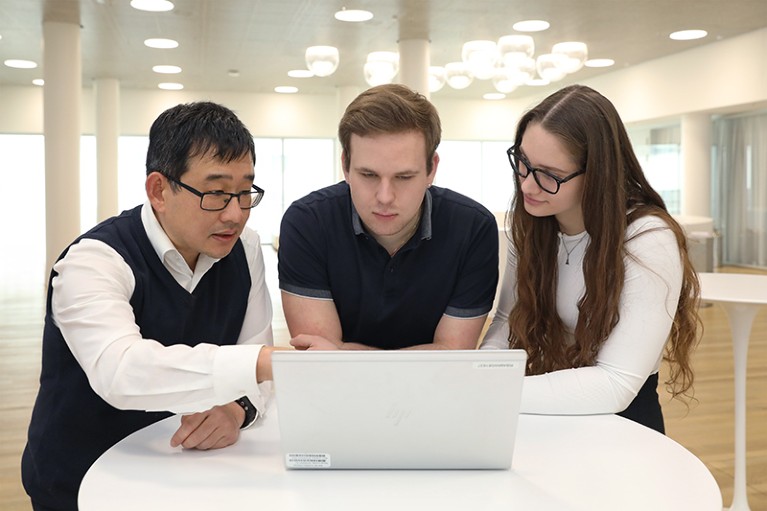
Jitao David Zhang (left) with his apprentices Jannick Lippuner (centre) and Giulia Ferraina.Credit: Matthew Lee
Giulia Ferraina and Jannick Lippuner, both 19, are my latest apprentices in the pharmaceutical research unit of F. Hoffmann-La Roche, a global company, at its headquarters in Basel, Switzerland. Both are in their fourth and final year of vocational education and training (VET), specializing in informatics and communication technology. Coaching them, just like discovering drugs, is a rewarding part of my job as a research scientist.
Giulia and Jannick attend vocational schools for one or two days a week. Besides studying professional topics, such as how to build a computer network or an app, they also acquire life knowledge and skills. These include setting a household budget, forming a family or partnership and even starting their own company.
The rest of their time is divided between working in my team as software developers for drug discovery and attending the company’s dedicated learning centre. Besides writing software that helps to find better drugs, they learn advanced informatics topics, such as cybersecurity and artificial intelligence (AI), and acquire crucial skills such as project management and presentation. Within four years, they will become software engineers with industrial work experience.
Vocational education is common in German-speaking countries. At around the age of 16, teenagers in Switzerland make a choice between general education in an upper secondary school and a VET apprenticeship in one of more than 250 professions. Defined and organized by a partnership between the Swiss federal government, professional associations and individual regions of Switzerland called cantons, VET combines on-the-job training with classes in schools. Each profession has its own educational plan, which specifies a nationwide standard of skills to be mastered by the apprentices. After finishing the training, which takes between two and four years depending on the profession, and passing a final exam, apprentices receive a diploma that certifies their qualification to work or to pursue higher education. Apprentices are paid a salary, which usually starts at 600–1,000 Swiss francs (around US$700–1,170) per month and increases in each year of training.
I stumbled on the apprenticeship culture in Germany while doing my PhD in computational biology in the 2000s at the German Cancer Research Centre in Heidelberg. Until then, I had no real idea about vocational training — but I did harbour some unfair stereotypes. When I was in secondary school in Tianjin, a city in northern China with prosperous industries and booming businesses in the 1990s, vocational training was often seen as an inferior choice to general education. An apprenticeship was stigmatized as the last resort for low achievers and problematic children. My stereotypes were banished as soon as I started working with and coaching apprentices in Heidelberg. The young people amazed me with their technical expertise and diligent work, and became co-authors of scientific software and publications. Coaching them improved my leadership and communication skills, especially across cultures, because neither German nor English, spoken by the apprentices, was my first language.
Nature Spotlight: Switzerland
I moved to Basel to take up an industry position in 2011. It soon became clear to me that Swiss people also consider the apprenticeship a respected education. Statistics confirm my impression. Two-thirds of young people in Switzerland opt for an apprenticeship, and one-third of businesses train them. Despite the trend in recent years for more students to choose general education over vocational training, high-quality apprenticeship openings remain competitive. My company trains around 300 apprentices across 15 professions in the Basel area every year. For 6 informatics and computer-technology positions, we usually receive more than 100 applications.
Giulia and Jannick are my fourth and fifth trainees. In their third year, Jannick automated a bioinformatics pipeline (see go.nature.com/49uegts) and Giulia developed several software widgets for chemists that help them to predict the properties of molecules to be synthesized. Currently, both are building a system that helps biologists to visualize and interpret omics data. Apprentices advance scientific research while honing their skills. Their education is an early-access, paid-for opportunity to gain the combination of theoretical knowledge and practical skills that is normally offered by universities.
Giulia and Jannick learn much from solving real-world problems such as fixing a bug. They learn more from making mistakes and getting feedback in a working environment. After attentive learning followed by good sleep (the working hours of underage apprentices are legally limited to a maximum of 9 hours a day), they become capable, productive and keen to learn more.
Doing an apprenticeship is not without risks and downsides. I can imagine that, for some 16-year-olds, it must be a formidable task to decide on a profession and to become self-disciplined and professional almost overnight. Also, the quality of education can vary by profession, school and company. Moreover, some might consider apprenticeships outdated in an age of automation and disruptive technologies such as AI potentially replacing human jobs. A German friend of mine who learnt book binding had to do another apprenticeship and study to get a job as an accountant. Will my apprentices and their peers face a similar fate?
Although the honest answer to this is ‘I don’t know’, two observations make me cautiously optimistic.
First, the Swiss apprenticeship system is constantly evolving. The educational plans are updated every few years with feedback from all parties. Teachers and vocational trainers such as me meet, exchange and receive continuous education regularly. Apprentices are incentivized to explore and adopt new technologies to enhance their productivity. For instance, apprentices in information and communications technology can already use tools such as ChatGPT in their final examination, as long as they declare the prompts they have used. A springboard from classroom to career, apprenticeship prepares one for changes in life.
Second, the apprenticeship system fosters individual growth. Beyond learning from experienced colleagues and working under supervision, apprentices are encouraged to lead activities — for instance, building a website for a project or advising schoolchildren about their career choices. Besides day-to-day work, my apprentices and I are required to hold a formal discussion every semester. We examine their professional and personal development, give each other feedback (from which I learn a lot about myself) and set goals for the coming six months. Apprentices acquire soft skills such as creativity, empathy, compassion, resilience and teamwork that will serve them well in life.
I am therefore convinced that an apprenticeship, if done right, is a valuable education. The short feedback circuit between what is needed and what is taught, as well as an education focusing on self-actualization and collaboration, prevent the formation of a chasm that is sometimes apparent between academia and industry1. Pondering my own journey to become a research scientist in industry, I wish that I had learnt earlier about how to recognize and solve real-world problems, the power of knowledge gained from experience, the importance of building trust-based relationships and the fulfilment gained by focusing on the growth and development of people around me.
Like most of my previous apprentices, Giulia and Jannick both want to attend university when their apprenticeships end. Before that, Jannick is with us for another year (including a six-month company internal exchange in the United States) before undertaking his military or civil service, which is mandatory for men of his age in Switzerland. Giulia will study informatics part-time while working as a software developer at our company. Both have promising careers ahead: ex-apprentices abound among Swiss political and business leaders. Other countries, including the United Kingdom, the United States and China, are also expanding and updating vocational training programmes. The world should perhaps take more notice of the Swiss model.
[ad_2]
Source Article Link


